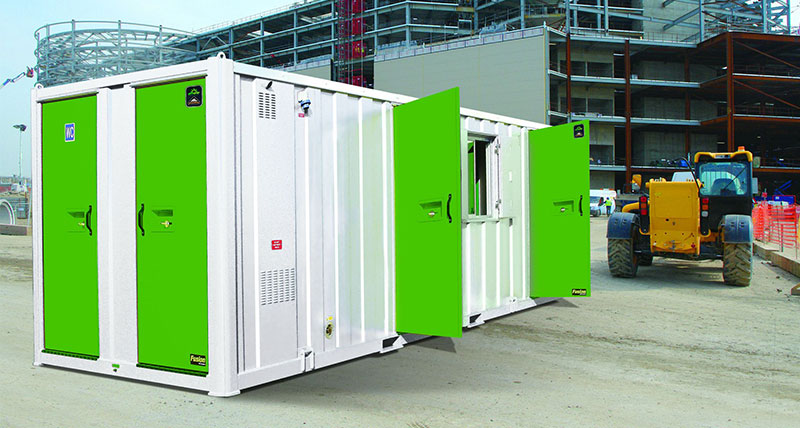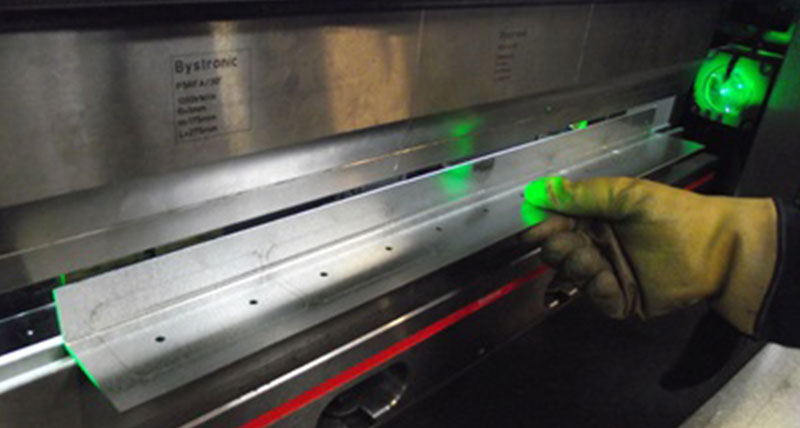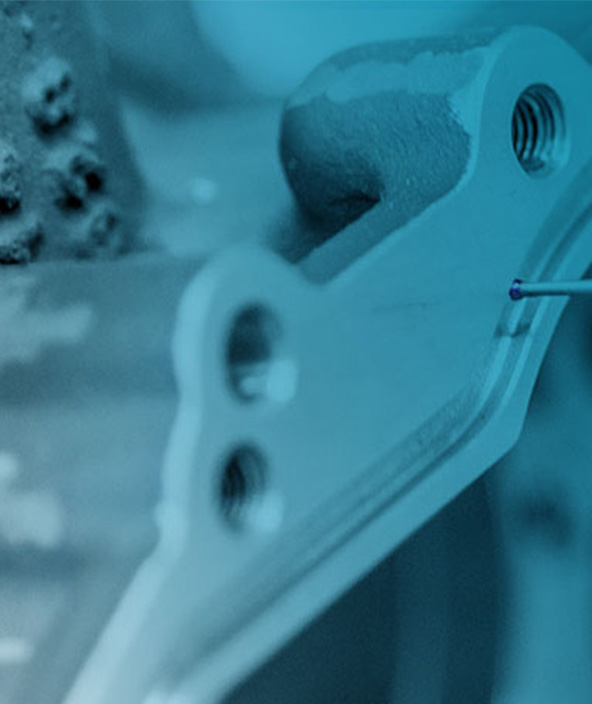Radbend begins and ends RADAN returners process
Groundhog - Wales
Contact us

Laser cutting on a fully automated Bystronic Fiber 3kw machine driven by RADAN, now takes precedence over punching, for a leading manufacturer of sheet metal welfare units for construction site and road workers.
Welsh firm Groundhog produces units for workers to wash, sit, eat and change their clothes on site. Made from high tensile CA 240 cold-rolled steel, they can be static for long term sites, or mobile for ease of switching from one site to another. Groundhog were one of the first companies to introduce mobiles around 20 years ago, enabling contractors to avoid the cost of transporting and installing static assemblies.
They manufacture 600 mobiles and 240 static units annually. The mobiles are all 2.5 metres wide, and come in four lengths between 3.6 and 6 metres, while the statics are 2.9 metres wide and either 6.1 or 7.6 metres long. Facilities include seating areas for six, eight or 12 people, offices, showers, toilets and hand washes, noticeboards, televisions, wi-fi routers and 3G.
 Groundhog had used RADAN for many years, then changed to another sheet metal CAD/CAM system which had links with MRP software. Design Manager Matthew Stevenson says: “I wanted to improve communication with the shop floor by linking the sheet metal CAD/CAM software to MRP, and at the time, RADAN couldn’t provide that. But we had issues with the new supplier right from the start.”
Groundhog had used RADAN for many years, then changed to another sheet metal CAD/CAM system which had links with MRP software. Design Manager Matthew Stevenson says: “I wanted to improve communication with the shop floor by linking the sheet metal CAD/CAM software to MRP, and at the time, RADAN couldn’t provide that. But we had issues with the new supplier right from the start.”
Eventually, after a period of having to constantly scrutinise the NC code as it was selecting the wrong tools, they decided to move back to RADAN, which he says is now fundamental to their manufacturing process.
“The business couldn’t operate without RADAN. I can say categorically there’s nothing else on the market that can offer the same solution to our requirements.” Even more so, now that RADAN has just introduced Radmanager, enabling it to integrate more fully into Groundhog’s complete I.T. structure.
“This is exactly what I wanted,” he says. Overall, Radmanager has direct links with RADAN CAD/CAM and can communicate easily with ERP systems, creating nests from multiple customer orders, maximising efficiency and sheet utilisation, and managing their customer orders through the nest production process.
Around 100 different sheet metal components go into an average unit, mainly cut on the laser now. RADAN also drives their Trumpf 2020 punch press and four Bystronic press brakes.
Laser is their preferred cutting technology, as the line is equipped with a ByTrans Extended tower, giving them considerably more automated throughput of sheets and parts, meaning production can continue after the shop floor closes for the night. “Our standard items are made from 1.5 and 2mm steel, most of which can be cut on the laser at around 20 metres a minute. The only time we use the punch now is if the component has any rolling offsets or other features that specifically require punching.”
and parts, meaning production can continue after the shop floor closes for the night. “Our standard items are made from 1.5 and 2mm steel, most of which can be cut on the laser at around 20 metres a minute. The only time we use the punch now is if the component has any rolling offsets or other features that specifically require punching.”
While 1.5 mm gauge accounts for more than half the 100 tons of steel used each month, the laser cuts thicker metal just as efficiently. “For example, it’s cut steel up to 15 mm, along with 8 mm 310 stainless, and 10 mm aluminium.”
Groundhog has four seats each of Radpunch and Radprofile, with two of Radbend. And the bending software begins their process as well as creating the final folds at the end of the production line.
Matthew Stevenson says: “When we design the components in Autodesk Inventor we use Radbend to make sure they can be bent as we wish, before we even take it into RADAN. It also allows us to check the tonnage and that the right tooling is available, along with flanges and clearances.”
He creates projects, comprising multiple items within the bill of material, applies priorities and selects sheets. “The auto nester does the rest, and then I see if anything needs tweaking. I can get a nest created, adjusted and onto the shop floor in around 30 minutes, all done in Project Nesting, as that enables me to see what’s been nested and what hasn’t.”
Material utilisation is also important to Groundhog, and he says spending additional time on a fixed nest for a long-running program is easily justifiable.
He is particularly impressed with how RADAN 3D analyses the model immediately after it’s imported, showing a bill of material-style parts list in the new right-hand side panel. “It shows whether we can progress the sheet metal parts top the next stage, by detailing whether the material is available and if the thickness has been properly calculated, considerably reducing the risk of errors.”
- As well as the welfare units, Groundhog also produces completely bespoke confined-space training assemblies, used by Government employees, the fire service, and workers who have to go down sewers and pipelines. People enter through a rooftop hatch, and find themselves in a maze. They work their way through, undertaking a series of tasks relevant to their jobs.
